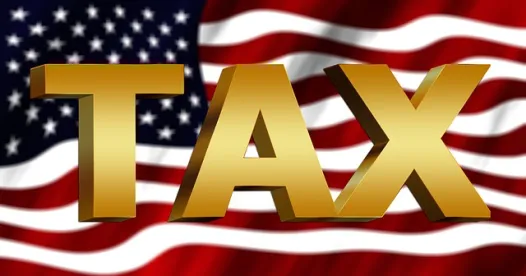On December 22, 2017, the president signed the Tax Cuts and Jobs Act (the “Act”). While the Act will impact many taxpayers, some of the more significant changes relate to how individuals and other non-corporate taxpayers are taxed on income from certain types of businesses and investments. Chief among these is the so-called “pass-through” deduction, sometimes referred to as the “Super 199 deduction” for its section number (new section 199A) in the Internal Revenue Code of 1986, as amended (the “Code”). Although there are significant ambiguities in the Act and material limitations on who may benefit from the Super 199 deduction and to what extent, the Super 199 deduction should be helpful for many taxpayers operating a business as a sole proprietor or through a partnership or S corporation. With careful tax planning, other taxpayers may be able to benefit as well.
Who qualifies for the deduction?
-
Any taxpayer that is not a C corporation may qualify for the deduction. This includes individuals, trusts, and estates, regardless of whether the taxpayer is subject to the individual alternative minimum tax or itemizes deductions.
-
However, the Super 199 deduction is most useful for taxpayers engaged in a “qualified trade or business” or “QTB.” A QTB is any trade or business other than a “specified service trade or business” or “SST.” (Engineering and architecture are specifically not SSTs.)
-
The deduction is available for taxpayers engaged in a SST, provided the taxpayer does not have taxable income of more than a threshold amount ($315,000 for joint filers and $157,500 for all other qualified taxpayers).
-
In general, an SST is a trade or business where the principal asset is the skill of one or more employees. That means that lawyers, doctors, nurses, financial service providers, actuaries, investment managers, consultants, artists, and accountants won’t be able to use the Super 199 deduction if they earn too much taxable income (which is different from QBI, discussed below). It is not clear how this rule will impact other “service” businesses. For example, is a plumber’s principal asset his or her plumbing skill?
-
How much is the deduction?
New Section 199A is packed with complex calculations.
Most taxpayers that qualify for the Super 199 deduction will be able to deduct up to 20% of certain types of income (qualified business income or “QBI”) the taxpayer earns from certain kinds of businesses that are organized as sole proprietorships or pass-throughs (S corporations, partnerships, and limited liability companies treated as partnerships for U.S. federal income tax purposes).
So, what is QBI? QBI is not dividends, interest, capital gain or loss, income from certain investment activities, annuity payments, and deductions and losses attributable to those items. Thus, QBI generally is rent, royalties, gain from the sale of inventory, and service fees, if that income is earned in a QTB (or an SST, subject to the limitations discussed above), less related deductions, expenses, and losses, including compensation of employees and contractors and “reasonable compensation” for services provided by the taxpayer to the QTB.
The Super 199 deduction may also be increased by 20% of certain amounts earned from real estate investment trusts and publicly traded partnerships treated as partnerships for U.S. federal income tax purposes (typically, large publicly-traded oil and gas and timber businesses).
What’s the catch?
-
The Super 199 deduction is available only for tax years beginning after 2017 and before 2026. Given this limited time period, the new 21% corporate income tax rate and adjustments to individual income tax rates, it may not be cost effective to convert an existing C corporation to a pass-through.
-
There are several reasons why the Super 199 deduction may be less than 20% of a taxpayer’s QBI.
-
The deduction can never exceed 20% of the taxpayer’s taxable income (which, again, is different from QBI), less net capital gain and certain dividends from cooperatives.
-
If 20% of QBI is more than the greater of (a) 50% of the W-2 wages paid in the QTB and allocated to the taxpayer or (b) 25% of the W-2 wages paid in the QTB and allocated to the taxpayer, plus 2.5% of the cost of the depreciable assets in the QTB, then only the lower amount is considered when calculating the Super 199 deduction.
-
-
While the definition of QTB is broad, it requires that the taxpayer be engaged in something more than mere investment activity. This is not a high bar. However, this standard raises some concerns:
-
The difference between investing and business is not always clear under generally applicable law, including specific provisions of the Code referred to in Code Section 199A. Thus, there is some potential for disagreements between taxpayers and the Internal Revenue Service and courts.
-
The business of a partnership is typically attributed to its partners. However, investment management is expressly treated as an SST. Thus, it is not clear whether an investment manager who manages a partnership that directly or indirectly operates a QTB and owns equity in that partnership will be treated as engaged in investment management or the QTB operated by the partnership.
-
Although the business of a partnership is typically attributed to its partners, the business of an S corporation is generally not attributed to its shareholders. Thus, it appears that allocations to an S corporation shareholder that does not actively participate in the S corporation’s business may not be QBI. Further guidance is needed.
-
It is unclear whether a taxpayer will be permitted to aggregate activities that together constitute a trade or business, but would not constitute a trade or business when considered separately.
-
-
Given that owners of partnerships cannot be treated as W-2 employees of the partnership, whether to compensate employees with equity compensation in a partnership should be carefully considered because, as discussed above, reducing W-2 wages paid by the partnership may also reduce the Super 199 deduction. The Act also changes how compensatory stock options and restricted stock units are taxed, further complicating this analysis.
What else does the Act do for pass-throughs?
There are several other highly technical provisions in the Act that affect entities treated as partnerships for U.S. federal income tax purposes. For example, one provision overturns a recent Tax Court decision by treating any non-U.S. person that holds equity in a U.S. partnership as engaged in any trade or business of that partnership. Another provision broadens a rule that requires a partnership to adjust its basis in its assets for certain limited purposes if a partner transfers its interests at a time when the partnership’s basis in its assets substantially exceeds the fair market value of its assets. The Act also eliminates the so-called “technical termination” rule, which requires that a partnership reset its depreciation deductions and other tax elections in case more than 50% of the partnership is transferred within a 12-month period.
What now?
As noted above, the president has signed the Act into law. For calendar year taxpayers, most, but not all, of the provisions in the Act become effective on January 1, 2018. Thus, taxpayers that are able to nimbly adjust to the new rules may experience better results. In any event, there will be no shortage of planning opportunities for taxpayers seeking to maximize the likelihood of benefitting from the Super 199 Deduction.
In light of the Act’s significant ambiguities and uncertain application to a variety of industries and situations, however, the precise contours of the Super 199 Deduction remain to be seen and likely will require interpretive guidance from the IRS. As more details emerge, we will continue to publish updates on the matters addressed in this alert and other aspects of the Act, all of which are addressed in the publications listed on our Tax Reform Resources page.





 />i
/>i

